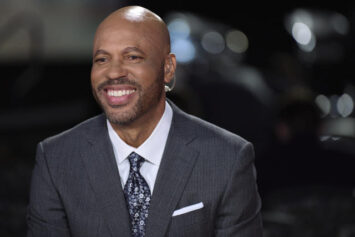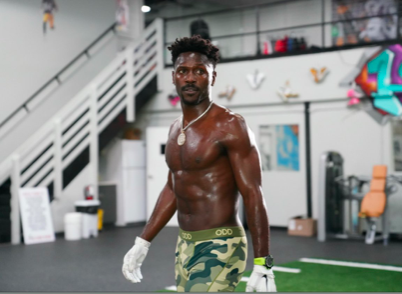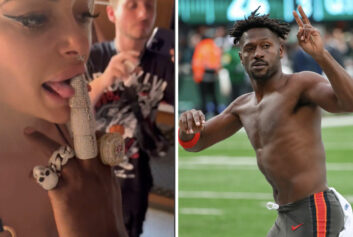Dear NFL,
As you may already be aware, professional sports have been depicted as the hallmark of manliness in the United States, since young men were donning leather helmets and slugging it out on muddy fields in football’s infancy. Toughness, heart, and the ability to overcome adversity are traits that have been celebrated by men and warriors since ancient times.
With the advent of professional sports came the opportunity for the common man to witness these celebrated attributes blossom in a favorite team or player over the course of a season or career. Thank you NFL. I couldn't imagine life without you. As is the case with all athletic competitions, the biggest, fastest and most explosive individuals are drawn to team sports.
With all those people flying around, someone will inevitably be seriously hurt. Helmets would be introduced. As well as padding and rules evolving within the professional leagues that would grow into the modern NFL, NBA, MLB, and NHL. These rules were theoretically designed to increase the safety of the sports in question.
Though the physiological and psychological damage that stems from chronic traumatic encephalopathy has only gotten press during recent times, it has always been apparent that the trauma to the skeletal and neurological systems that haunt those that play sports – especially football – has manifested in beat down bodies and mushed minds of retired players. Some have said you made a concerted effort to hide the true effects of concussions on the fragile brain in the past. While I do not know that to be true, it would be reprehensible if it were. You wouldn't do that, would you?
Every occupation has its hazards. But as one who has sat and visited with the late NFL great Deacon Jones, as well as witnessed civil rights icon and former NFL Hall of Famer Jim Brown walk across a stage, I can tell you for certain that the bodies of football players don't age well. Though the spirit is often indomitable, the body of some will simply begin to deteriorate far faster than that of a person who did not play the game.
Prior to the start of the 2013 NFL season, the league announced several rule changes would be introduced to improve the safety of the game. The “crown of the helmet” rule, as well as an emphasis on players launching themselves into other players, is primarily among them. The “crown” rule was designed to prevent offensive and defensive players from lowering their heads before making contact outside the tackle box, which disproportionately effects the running back, cornerback and safety positions more than any other.
The move met with derision before coming into effect during the regular season. Runners and defenders were no longer allowed to lower their heads like legendary running backs Earl Campbell and Ironhead Heyward did in days past. The suicide deaths of former San Diego Chargers great Junior Seau, and former Chicago Bears great Dave Duerson, and the posthumous revelation that each suffered from chronic traumatic encephalopathy has placed the NFL under an enormous amount of scrutiny for its poor record on diagnosing and preventing concussions.
On the surface said rule changes appear to be a logical reaction to a potentially life-threatening safety concern that is virtually impossible to diagnose in a living patient. A CTE diagnosis can only be done by performing an autopsy on the brain of a deceased individual. And although research surrounding the disease is ongoing, physicians suspect the ailment manifests itself as headaches, confusion, dizziness, depression and, in worst-case scenarios, extreme aggression and suicidal thoughts.
Back in October, Washington Redskins safety Brandon Meriweather was flagged twice for personal fouls in a game against the Chicago Bears where he made helmet-to-helmet hits on WR Alshon Jeffrey and WR Brandon Marshall. He was also fined for two similar hits against Green Bay in Week 2. Marshall went on record to say the NFL should consider banning Meriweather because of hits. "Guys like that, maybe he needs to get suspended or taken out of the game completely. … I understand big hits. That's part of our game," Marshall said. "But when you have a guy that does it week in and week out, that's when it becomes a problem."
The league-mandated umbrella of protection that was once only reserved for quarterbacks has been expanded to include all ball carriers outside of the hashes. As is the case with most rule changes, there have been several circumstances this past regular season in which players were injured due to defenders aiming low to avoid helmet-to-helmet hits. One such attempt saw Green Bay Packers WR Randall Cobb injured by Baltimore Ravens safety Matt Elam back in October.
Pittsburgh Steelers safety Ryan Clark had a play reviewed by the NFL Competition Committee over a legal low hit that ended Miami Dolphins tight end Dustin Keller’s season. Why would you do that NFL? He went low because your rule made him go low.
An infuriated Clark recalled an incident where he feels he cost his team a game this season when he second-guessed his tackling method. He revealed this in a conversation with the Pittsburgh Post-Gazette.“I remember a hit I had on Victor Cruz last year, which was clearly legal, but it gave up seven points,” Clark said. “I hurt my team by doing something I deemed legal and something the NFL also deemed legal by not fining me. So you go to the other extreme. The guys know there is no way possible [to] get fined if [they] go low. It will be one or the other. Guys will hit up high and maybe risk getting a concussion or hurting a shoulder. When you get hit low, the season is going to be over. If they decide to change this rule, they might as well put flags on.”
You say the new target area for tacklers should be the torso area and not the shoulders and up. However, with the speed at which plays take place, this has proven to be a very difficult task for some. If a player is in position to make a defensive play and hesitates, it could cost his team a TD, a game, or even a playoff birth. "It's unfortunate," Packers safety Chris Banjo said of the issue, "but we get cut for being in positions like that. If you're letting a guy catch the ball, you could have got him but you didn't hit him because of what's going through your head, we get cut for that."
So does a player simply go as hard as he knows how and risk helmet-to-helmet contact or go low to avoid fines, but risk ending a player’s career by exploding his knees?
Brown’s safety T.J. Ward, in an interview with the Cleveland Plain Dealer, spoke on knee and leg injuries. "It's going to happen and it's going to continue to happen," he said. "That's how the rules have forced us to change. If you aim at the torso guys, start ducking. So to avoid that because guys duck, you have to aim even lower."I'm wondering where it's going to go from here. Honestly, it doesn't look like it's going to be good for [defenders]. If this keeps happening I got a feeling [the NFL will] say you can't do that now. Where are we left then? Let them catch the ball before we tackle them?"
Though there has been no audit on knee injuries caused by secondary players aiming low on ball carriers for this past regular season, it is a safe bet to say the number has gone up. It is impossible to quantify the extent at this point. Are these the growing pains of a sport with evolving safety concerns or simply the result of a smokescreen public relations campaign to massage medical concerns surrounding concussions and chronic traumatic encephalopathy?
In light of all of this, the NFL is still quietly moving ahead with its desire to turn the rigorous 16 game regular season into 18 games thus increasingly the overall likelihood of concussions and knee injuries. What sense does that make, NFL? It looks like you're talking out of both sides of your face.
In addition, the NFL competition committee is seriously considering expanding the playoffs to include two more teams in 2015 as well. With the proposed decrease in preseason games and the limits placed on offseason team activities by the league, the chances these types of injuries increase is even higher. But you keep singing the same old safety song. Meanwhile, player fines for personal fouls have increased 30 percent since 2009 in direct correlation with the so-called emphasis on player safety.
Your reps are on record as saying that the NFL is constantly taking measures to protect its constituents. And with some players signing contracts in excess of $100 million, there are no greater investments than the players themselves. But these moves to lengthen the season tell me that maintaining a sizable profit margin, not player safety, is what drives the NFL at the end of the day. Any and all assertions to the contrary are hogwash.



